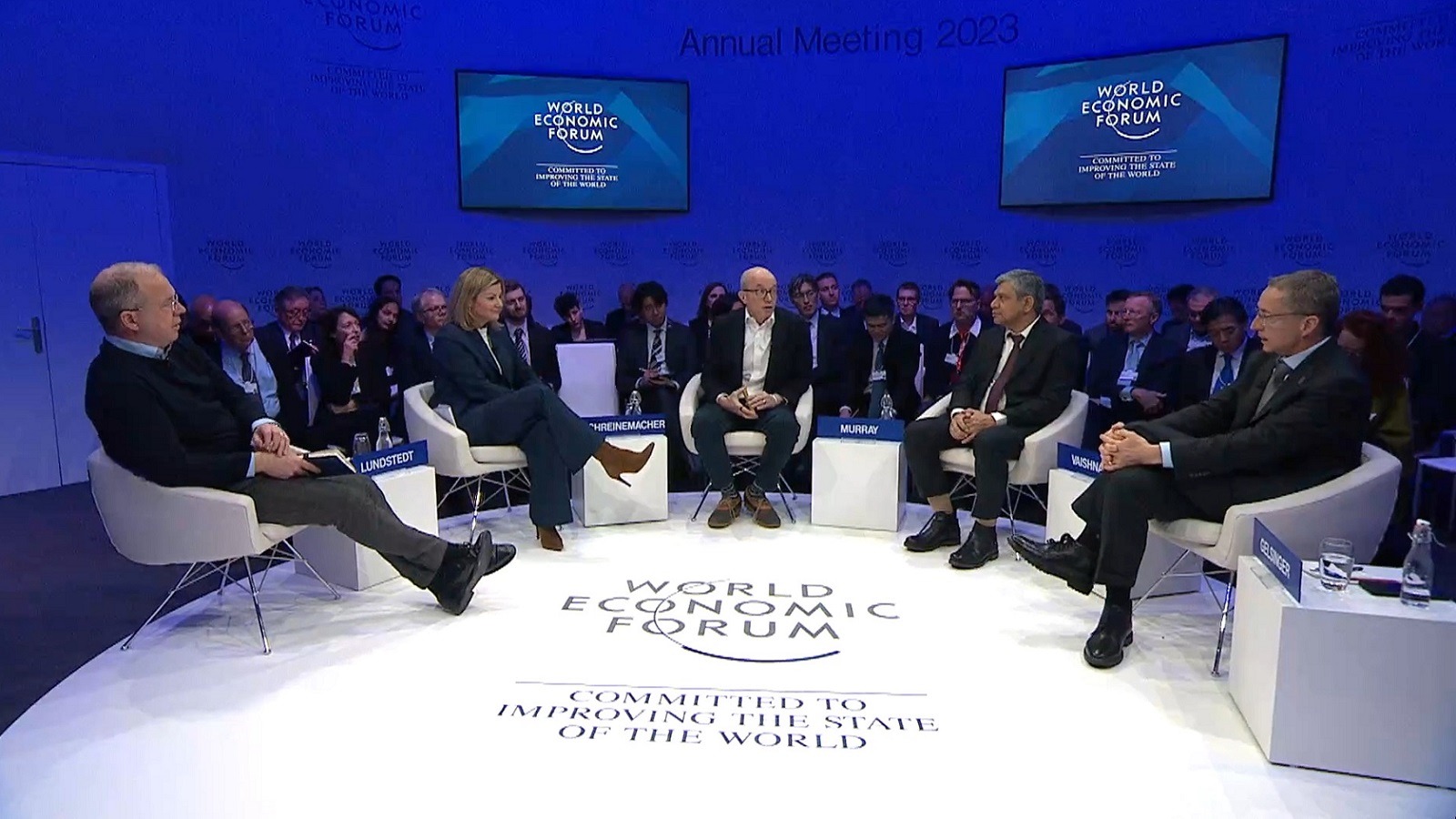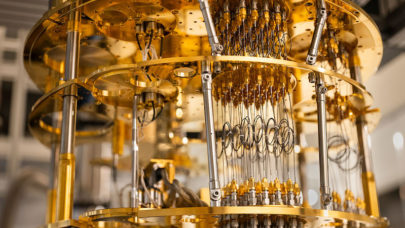The future of the semiconductor industry was partially being decided last week by a mix of politicians, policy hawks and chip industry executives jockeying for influence at the World Economic Forum.
Intel CEO Pat Gelsinger maintained a high profile in the corridors in Davos, playing politics as he tried to rally governments to lend billions of dollars in incentives to open chip factories in their regions.
Gelsinger at WEF said that semiconductors would become a geopolitical force in the coming decades. Chips are a relatively new weapon in trade wars, with the U.S. banning shipments of chips to Russia and advanced chips to China in the name of national security.
Specifically, the U.S. is restricting shipments of high-performance CPUs, GPUs and AI chips to choke China’s supercomputing, quantum and artificial intelligence initiatives.

For decades, Asia has been a nerve center of chip manufacturing. But the chip shortages raised concerns that chip manufacturing was concentrated in the hands of a few countries. That prompted the U.S. and EU to pass legislation that offered billions in incentives for companies like Intel and TSMC to open factories on their soil.
But there was plenty of criticism at WEF for the politically charged semiconductor policies adopted by the U.S. and EU.
The policies, which lean toward chip protectionism, were derided as being poorly thought out, and far removed from the ground truth of how the semiconductor industry works. Critics also said that China could not be magically erased from the chip supply chain.
A panel session at the World Economic Forum last week, titled “Learning from Semiconductor Supply Shocks” started off on a somber note, with moderator Alan Murray, CEO of Fortune Media USA Corp., noting a lack of interest in semiconductors.
“This is going to be the most important session you go to in your whole time in Davos. I cannot believe there are empty seats,” Murray said.
Murray noted that semiconductors touched everyday lives by powering devices like phones, cars and watches. He noted Gelsinger’s earlier comment from Davos about semiconductors being the new oil, but said semiconductors would become equally or more important.
“Conversations here at Davos are clearly about moving away from oil. We are not moving away from semiconductors. They will increase in importance over the course of the next two decades,” Murray said.
The recent chip shortages led up to a ramp in silicon production, but the shortages have now ended. Chips are now piling up in warehouses as inflation and the corresponding economic decline has slowed down purchases. However, there are still shortages of chips for products like automobiles.
Gelsinger reminded the audience that the chip industry is highly volatile with cycles of supply and demand imbalance. He also said “everybody still believes that semiconductors will double this decade.”
Intel’s financial fortunes have sunk with the global economic challenges, and the company is trimming operations, cutting products and has started laying off employees.
Gelsinger has committed billions to open new factories in the U.S. state of Ohio and in Germany, and expects to receive billions of dollars in incentives pledged by the U.S. and EU to help fund the new factories.
“A three-quarter economic cycle cannot dictate a five-year capital cycle. We have to keep making those long-term investments even as near-term we are struggling through inventories,” Gelsinger said, days ahead of the company’s fourth-quarter earnings call on Jan 26.
The panel participants reiterated lessons learned from the pandemic: to never depend on one country and region for chip supplies. About 90% of the high-performance chips come from Taiwan, which was not ideal, and Gelsinger quickly added “of course, I’m fixing that quickly.”
A nonprofit specializing in chip policy research, the Center for New American Security, is recommending that U.S. policy makers take steps to re-shore chip production, while hanging the guillotine on China’s ambitions to advance chip manufacturing.
CNAS recommendations include limiting China access to technologies like chip design software (also known as electronic design automation tools) and EUV (extreme ultraviolet) machines to etch out advanced features on silicon. CNAS is advising for a balanced global supply chain where the risk is spread across a range of countries.
The U.S. – which is considered a pioneer in semiconductor production – is now pushing its industrial policy on semiconductors toward self-sufficiency in chips. China and Taiwan became chip powerhouses only after decades of policies prioritizing semiconductors and chip production.
But some are opposed to the idea of breaking up a global supply chain, and cutting off countries entirely from it. Panel members lauded the U.S. efforts to break Asia’s stranglehold on chip production, but also said the country’s industrial policy on semiconductors has not been thought through well.
“We need open trade. I know this is under a lot of pressure internationally, but I will be fighting for open trade and to prevent protectionism,” said Liesje Schreinemacher, minister for foreign trade and development cooperation at Netherlands’s foreign affairs ministry.
The Netherlands is at the center of the U.S.-China chip war due to ASML, a company based in the country that manufactures tools used in factories to make advanced chips. ASML is complying with U.S. export restrictions and is not shipping advanced EUV technologies to China. But the Dutch government is resisting U.S. pressure to support tech export restrictions on China, and Schreinemacher last week said “you can’t say that they’ve been pressuring us for two years and now we have to sign on the dotted line. And we won’t,” according to a report in the VOA.
At the forum, Schreinemacher maintained her rebellious stance, saying that onshoring could backfire and undermine the ongoing efforts to tame semiconductor production and supply chain. She also floated another concept of “friendshoring” – a relatively new term about creating a supply chain among friends – to cover all the bases on advanced chips, production maturity and other areas. But she championed open trade, saying that U.S., EU, and Asian countries need to work together to avoid semiconductor shortages.
Gelsinger didn’t shy away from the topic of China, saying the country was an important cog in the global supply chain and couldn’t be ignored. China is the second largest chip manufacturer behind Taiwan, he said.
Taiwan processes “most of the equipment through China. It has become a huge piece. There is nothing like disengagement ever possible in the economy because they play a huge role. At the same time, we are also saying “what does the geographically balanced supply chain need to look like for the world?” Gelsinger said.
Gelsinger also clarified that the chip supply chain is complex, with many intermittent steps involved before a chip is pushed out of the factory and into a device. Some steps include acquiring the raw material and refining it, and packaging, assembly and testing, which could be spread over multiple countries and factories.
“It’s also the systems and sheet-metal bending that goes in, where the power supply is built, the displays, the LCDs, and so on. It has to be across the supply chain,” Gelsinger said.
Gelsinger’s advice to the government was “to make sure we’re looking across the supply chain and fixing one-by-one every one of the critical factors that give you the assurance of supply that you need for your critical industries over the long term.”
The politically motivated U.S. and EU semiconductor industrial and trade policies attracted criticism from Martin Lundstedt, the president and CEO of Volvo. He said the policies haven’t been thought out too well, and policy makers need to approach it like a business.
“I think Europe and the U.S. have not spent… enough time on thinking through the strategic pieces of their balance sheet. It is not about protectionism. It is like a company. What should I partner up with? What should I do and understand when it comes to technology innovation?” Lundstedt said.
He gave 5G rollouts as an example on how governments should shape up semiconductor policies. The role of 5G and its uses were well imagined and conceived, and it acted as a platform for innovation for business use. The government was more an enabler for infrastructure improvements, auctions and other steps. The entire 5G rollout was well thought out, Lundstedt said.
“That is a balance sheet piece for future infrastructure,” Lundstedt said, adding “that is what we need to think about when we think about the critical components – all the value chains in order to be competitive and innovative in all aspects.”
Volvo’s sales suffered due to the semiconductor shortage, but the struggles also reinforced the importance of chips in cars. Volvo trucks powered by diesel have about 1,750 semiconductors, but that will double with the battery powered trucks, Lundstedt said.
Lundstedt also cited India’s long-term plans to build a semiconductor business as a good way to approach policy decisions. Ashwini Vaishnaw, who is India’s minister of electronics and information technology, shed any political talk and took a business-like approach with metrics to back up the country’s semiconductor vision.
Vaishnaw said that India had a large talent pool of 52,000 semiconductor engineers working on legacy and cutting-edge nodes, and had plans to develop 85,000 more engineers over the next 10 years by refining the education system. Companies that set up shop were already exporting semiconductor products. About 42% of India’s energy production was from renewable sources and that number was growing, and that would be attractive to semiconductor companies pursuing sustainability goals.
“It’s not more difficult in reality, and we need to think through what all these critical pieces are for the European or North American balance sheet,” Lundstedt said.
The panel audience members included Michigan Governor Gretchen Whitmer and Ohio Senator Rob Portman, who took a contrasting approach. They talked about creating high-tech jobs on U.S. soil, which was a goal of the U.S. CHIPS and Science Act, which was passed last year. Their macroeconomic approach – which Lundstedt advised against – was similar to the politically charged debates that happened in the U.S. Senate and House ahead of the passing of the legislation.




























































